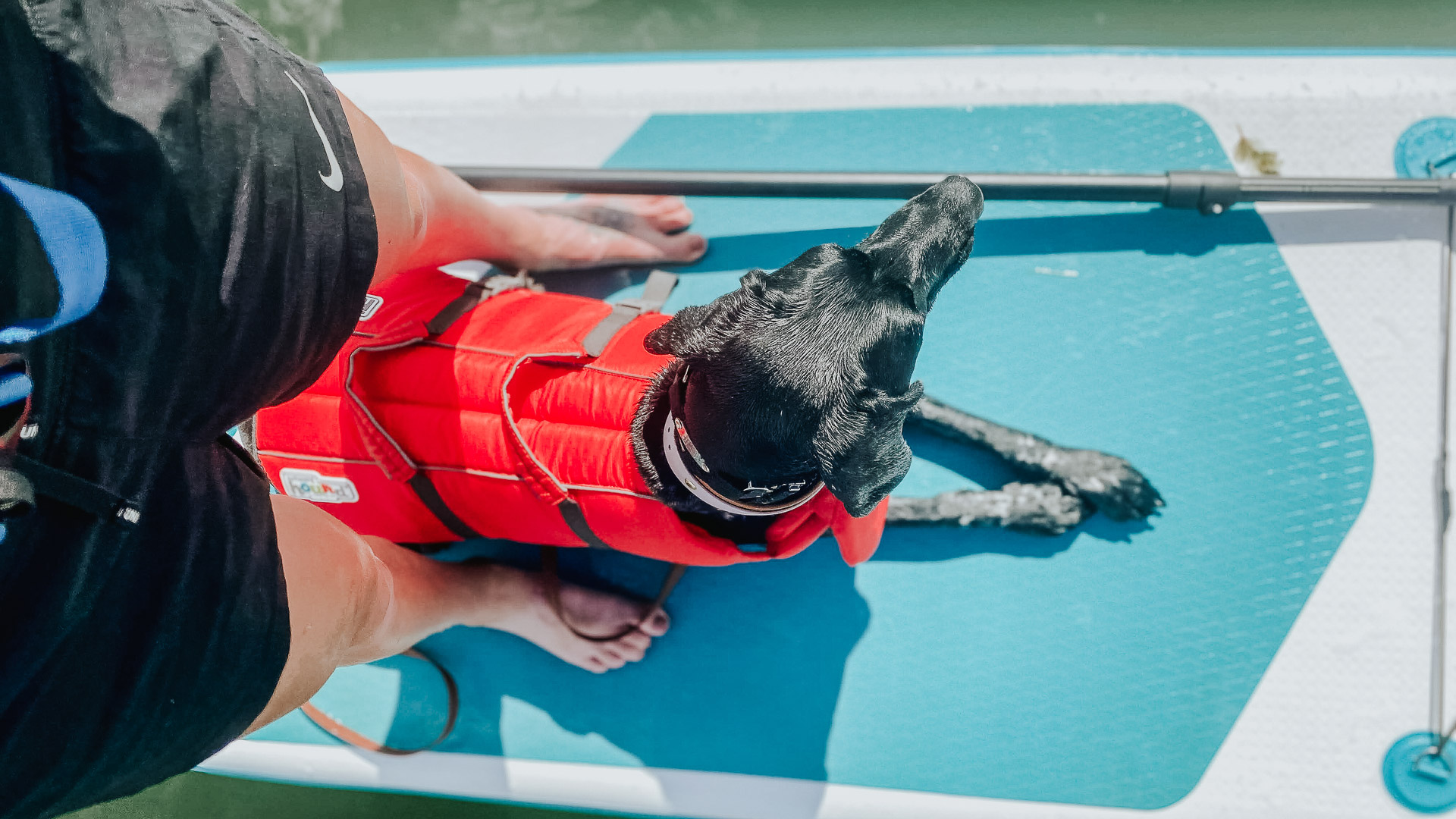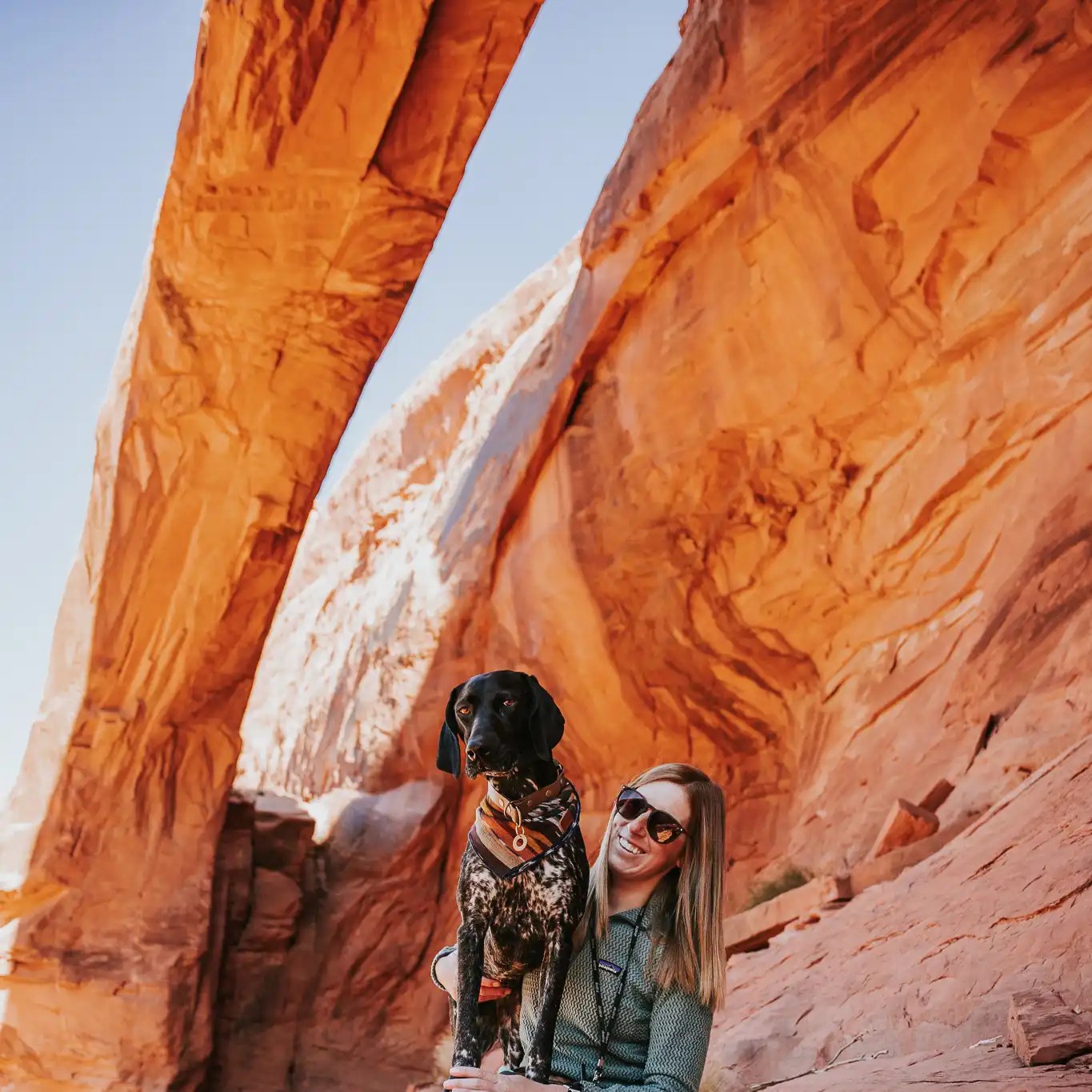
Over 50% of households in the United States own at least one dog. For many households, dogs are an integral part of the family and being able to bring them along on outdoor adventures makes everyone happier. Paddleboarding is a great family- and dog-friendly activity; however, we want to make sure all family members, including our dogs, are prepared for this excursion. Here are some tips to ensure success and fun on the water this summer.

Find A Location
The first thing to think about is where you will go paddleboarding with your dog. There are many options, including state parks, regional parks, public parks and remote alpine lakes. Depending on what kind of adventure you are looking for, one might appeal to you more than the others. However, the most important part is making sure your chosen location allows dogs. This information is usually stated online or can be confirmed with a quick phone call to the park. In addition, even locations that allow dogs may have rules about where dogs can go, when they can be there and how they must behave.
Another thing to consider is that most state parks and regional parks will charge a daily or seasonal entry fee, and some have additional costs to bring your dog. In addition, some locations allow dogs on paddleboards but do not allow them to swim in the water. Some locations require leashes, while others do not. Some lakes may have distractions, such as geese and ducks swimming near you, while others may not. If you choose the more isolated option in an alpine lake, you will want to consider if you need to hike to the lake with your dog while carrying a paddleboard. It is important to plan accordingly and follow all rules in place so we can continue to use these places with our dogs for many more years.

Check The Weather
This might seem like a no-brainer, but there are many weather factors to consider before going paddleboarding with your dog. You will want to consider the air temperature first and foremost. This will likely determine if it is a good day to head out on the water. It will also help you plan your location and attire. The next step is checking water temperature, especially if you think your dog will want to jump off the board and swim periodically. If you are going to a state or regional park, this information is usually available online or through a phone call to the park. Another important condition to check is wind speed. Wind can turn a beautiful, sunny day into a wet and cold day if you get blown off your paddleboard into the water. Consider the amount of balance it will take for both you and your dog to stay on the board and how high winds may affect this.

All The Gear
The most essential piece of gear for both you and your dog is a personal flotation device (PFD). There are many forms of PFDs for humans, but they all give you more buoyancy and help you stay afloat in the water. Even a strong swimmer should always wear a PFD while on a paddleboard, just in case. There are also many options on the market for your dog; the most important factor is that it fits them properly and is rated for their weight. Likewise, even if your dog is a strong swimmer, it is still important for when they get tired or struggle because of external factors, like current or wind.
As far as other human clothing goes, I dress based on the weather and temperature. Sometimes this means a swimsuit, and sometimes this means leggings and a jacket. I carry my phone with me in a waterproof carrier. I also bring a small dry sack to keep my other belongings in and attach it to the front of my paddleboard.
For dog attire, I prefer to use waterproof gear so it doesn’t get heavy or stinky when wet. Biothane collars and leashes are my favorite for paddleboarding. They are lightweight, don’t get soggy and clean easily afterward. They also last forever! Because you will be training, building confidence and rewarding good behavior with your dog while you are on the water, I also like to bring high-value treats. I store them in a fanny pack or the pocket of my PFD in a sealed ziplock bag to prevent water getting in.

Practice Before You Go
Think about all the steps you will need to take when you go paddleboarding with your dog and practice those steps at home first. The following are things I suggest practicing at home before going to the lake: blowing up your board while your dog waits patiently and calmly nearby, setting up the fin, paddle and dry sack, putting on your PFD and your dog’s PFD, carrying your board and paddle while holding your dog’s leash and getting on and off the board safely. Another tip is to make sure you have all your gear in one place or bag and/or make a paddleboarding checklist so when you load up the car, you don’t forget anything for you or your dog.

Prepare Your Dog
There are a few different things you can do to help prepare your dog to go paddleboarding. You can start working on most of them now so you are ready when summer arrives. Getting your dog comfortable around and on the board is something that can be practiced in your house or yard. Blow up the board near them, let them climb on and off the stationary board and then move it a little with your hands to mimic the water. It isn’t necessary that your dog enjoys water to go paddleboarding, but it will help them be more comfortable. Take them to the water, without the paddleboard, and build their confidence going in and out to varying depths by using their favorite toy or a good stick. Start with very short throws and gradually increase distance as they are ready. Another helpful skill to work on is basic obedience commands, such staying in a sit position or lying down. This will help you maintain balance while paddling. If your chosen location allows dogs to be off leash and you plan to let your dog swim while you paddle, a reliable recall is also very important to keep you, your dog and everyone around you safe. The last thing you want is your dog swimming to a stranger’s paddleboard, knocking them off balance and into the cold water.

Start Small
Slow and steady wins the race. Start small to build your confidence and your dog’s confidence. The first few times you go, stay closer to the dock or shore so that you can easily get to dry land if things aren’t going according to plan. Also make trips shorter in length to keep your dog excited and happy about paddleboarding with you. You can build distance and time gradually as you both feel more comfortable in the water on the board.

Invite Friends And Family
The first few times you go paddleboarding with your dog, it may be easier if it is just you and your dog. This allows your attention to be completely focused on them. It also allows you to follow the steps above about starting slow without feeling pressure to be out for long durations or make it to the other side of the lake. Lastly, it gives you plenty of opportunities to reward and reinforce good behavior. But, once you feel comfortable that you and your dog have a good understanding of this activity together, it is a fun whole-family or group of friends outing on a hot summer day!





